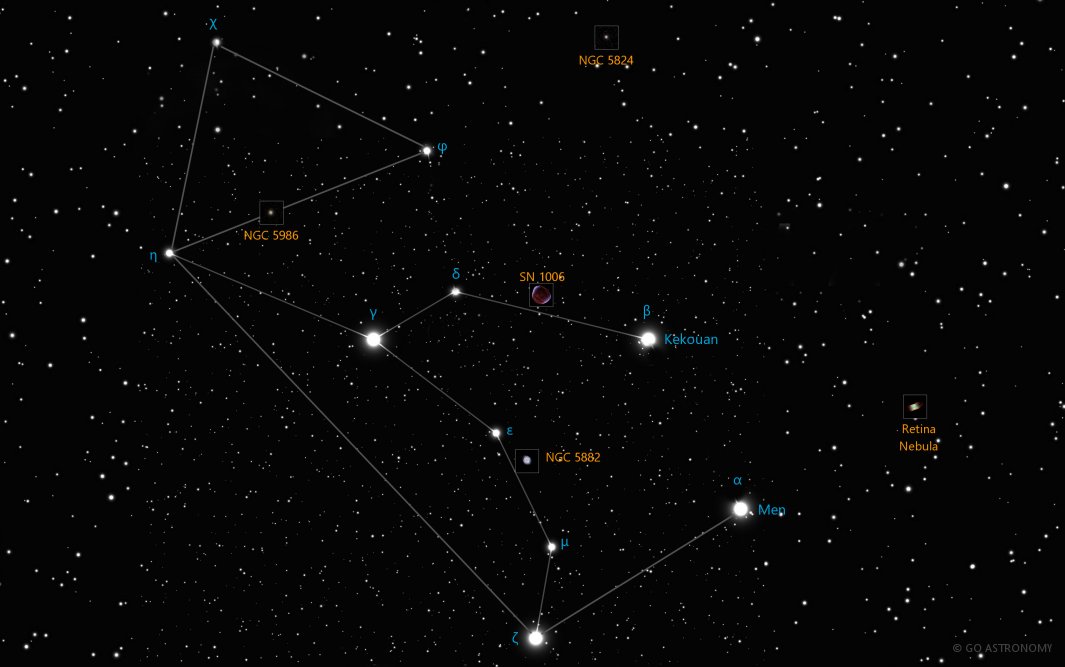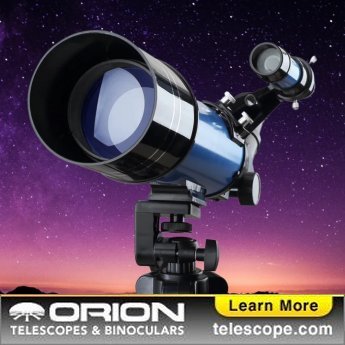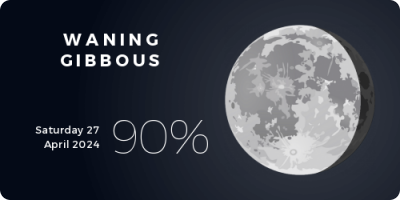Lupus, the Wolf (Lup)
(LOOP-us)
The Southern constellation of Lupus, the Wolf, is best viewed in Summer during the month of June.
Lupus is the 46th largest constellation. It's brightest star is Men at magnitude 2.30. The boundary of the Lupus constellation contains 8 stars that host known exoplanets.
- Pronunciation:
- LOOP-us
- Meaning:
- Wolf
- Genitive:
- Lupi
- Abbreviation:
- Lup
- Constellation Family:
- Hercules
- Hemisphere:
- Southern
- Quadrant:
- SQ3
- Visibility:
- 35° N - 90° S
- Best viewing month*:
- June
- Area:
- 334 sq. degrees
- Size:
- 46th largest
- Right Ascension (avg):
- 15h 23m
- Declination (avg):
- -42°
- Brightest star:
- Men (2.30)
- Stars with planets:
- 8
- Messier objects:
- |
- Caldwell objects:
- |
Brightest Stars in Lupus
The 10 brightest stars in the constellation Lupus by magnitude.
- Star
- Magnitude
- Spectral class
- Alpha Lupi (α Lup)
- 2.3
- B1.5III
- Beta Lupi (β Lup)
- 2.68
- B2III
- Gamma Lupi (γ Lup)
- 2.8
- B2IV
- Delta Lupi (δ Lup)
- 3.22
- B1.5IV
- Epsilon Lupi (ε Lup)
- 3.37
- B2IV-V
- Zeta Lupi (ζ Lup)
- 3.41
- G8III
- Eta Lupi (η Lup)
- 3.42
- B2.5IV
- Iota Lupi (ι Lup)
- 3.55
- B2.5IV
- Phi Lupi (φ1 Lup)
- 3.57
- K5III
- Kappa Lupi (κ1 Lup)
- 3.88
- B9V
Star Clusters in Lupus
The most notable and easy-to-find star clusters in the constellation Lupus . Also see all star clusters.
Nebulae in Lupus
Notable and easy-to-find nebulae in the constellation Lupus . Also see all nebulae.
Black Holes in Lupus
These are the most well-known smaller (non-supermassive) black holes in the constellation Lupus. Although black holes cannot be seen directly, the smaller ones are at the center of some star clusters and supernova remnant nebulae, which can be seen. Supermassive black holes are at the center of most galaxies, such as Sagittarius A* at the center of our Milky Way galaxy. Also see all black holes.
- Black hole
- Type
- IL Lupi
- stellar
The Cosmic Wolf
Lupus, the Latin name for wolf, is a constellation that occupies a region of the celestial sphere in the southern sky. While not as well known as some other constellations, Lupus is significant due to its unique historical context and the fascinating celestial objects it contains.
Historical Overview
Lupus is an ancient constellation that has been recognized for millennia. Its first depictions can be traced back to the ancient Greeks, and it was later included in Claudius Ptolemy's list of 48 constellations. The Greeks usually depicted Lupus as a wild animal being impaled by the Centaur (represented by the neighbouring constellation Centaurus), while in the Roman interpretation, Lupus was identified specifically as a wolf.
Location and Main Features
Situated in the third quadrant of the southern hemisphere (SQ3), Lupus can be seen between latitudes +35? and -90?. It is surrounded by six different constellations: Centaurus, Circinus, Hydra, Libra, Norma, and Scorpius. Despite being relatively large, covering an area of 334 square degrees, the constellation does not contain any particularly bright stars, which can make it a bit more challenging to locate.
Major Stars
The brightest star in Lupus is Alpha Lupi, also known as Men or Kakkab, which is a blue giant located approximately 460 light-years away. It shines at magnitude 2.30, making it relatively dim compared to the brightest stars in other constellations.
Beta Lupi is the second brightest star in the constellation. It is a blue-white giant situated around 383 light-years from Earth. Other notable stars in Lupus include Gamma Lupi, a binary star system, and the blue subgiant Delta Lupi.
Deep Sky Objects
Lupus hosts several intriguing deep-sky objects. The constellation is home to the globular clusters NGC 5824 and NGC 5986. Both of these objects are visible through a small telescope, but NGC 5986 is the brighter and larger of the two, making it a popular target for amateur astronomers.
Another fascinating object in Lupus is the Retina Nebula (IC 4406), a bipolar planetary nebula that presents a rectangular shape, hence its nickname 'The Box Nebula'.
Observation
The best time to view Lupus is in the months of April through June. In mid-northern latitudes, Lupus remains low on the southern horizon. However, it can be seen higher in the sky from locations further south. While the constellation?s stars are not especially bright, they can still be seen with the naked eye under good conditions, away from city lights.
Lupus in Modern Astronomy
Despite its relative obscurity, Lupus remains a topic of interest for astronomers. The constellation's deep-sky objects, such as its globular clusters and nebulae, offer plenty of opportunities for observation and research. Furthermore, its location along the plane of the Milky Way means that it is an area of active star formation, which makes it a valuable region for studying the life cycles of stars.
* Constellation shown for northen hemisphere skies. For the southern hemisphere, constellations appear rotated 180 degrees (upside-down and left-right reversed) from what is shown. Remember that seasons are reversed too - summer in northern latitudes is winter in southern latitudes.
** Circumpolar constellations are visible year-round in the hemisphere listed (and not at all in the opposite hemisphere).





